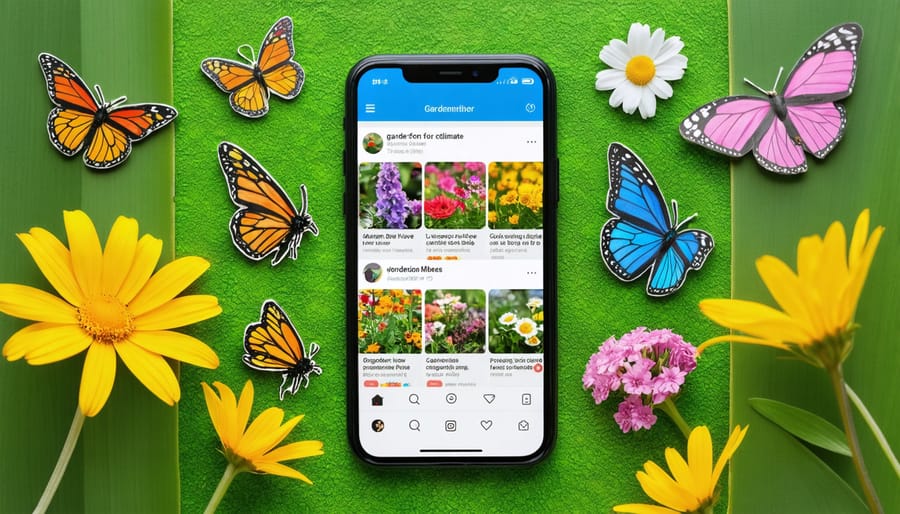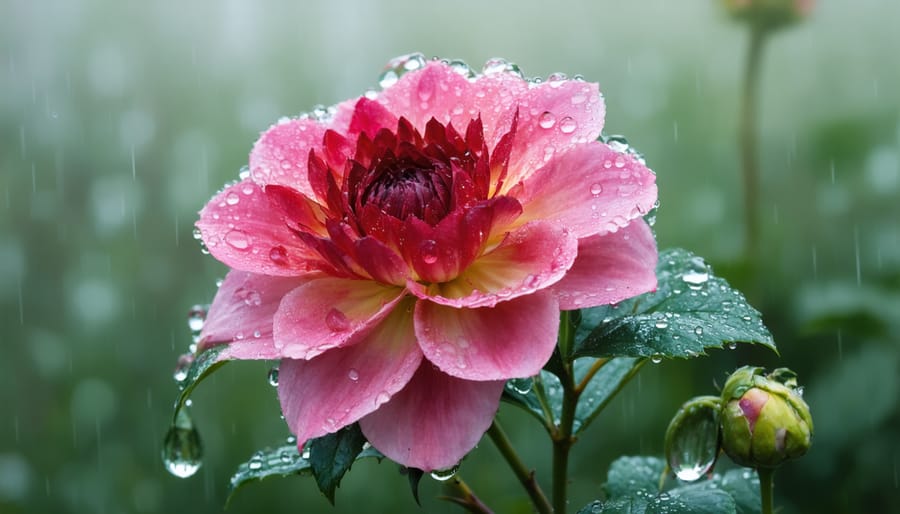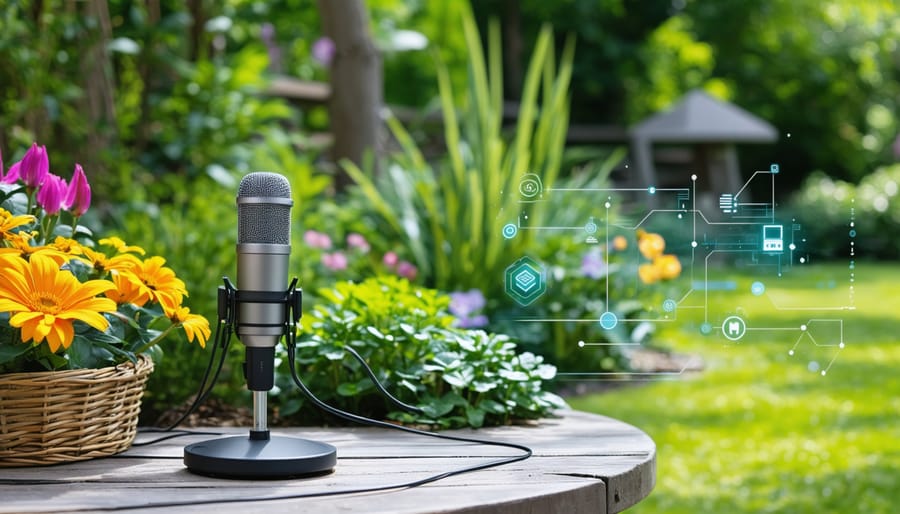Environmental social media campaigns have revolutionized how gardeners connect, share, and drive positive ecological change. From viral hashtag movements like #GardenersForClimate to community-driven initiatives saving endangered pollinators, social platforms have become powerful tools for environmental advocacy through gardening.
Today’s gardening community harnesses Instagram, Facebook, and Twitter to spotlight critical environmental issues, share sustainable practices, and build networks of eco-conscious growers. These digital campaigns transform individual garden plots into interconnected hubs of environmental action, reaching millions with messages of conservation and sustainable growing.
What makes gardening-focused environmental campaigns particularly effective is their ability to demonstrate real, tangible change. When gardeners document their journey from chemical-dependent plots to thriving organic gardens, or share their success with water-saving techniques, they inspire others to take similar actions in their own spaces.
The visual nature of platforms like Instagram and Pinterest perfectly suits gardening advocacy, allowing campaigners to showcase before-and-after transformations, document wildlife returning to restored habitats, and demonstrate the beauty of working with nature rather than against it. These compelling visual stories cut through digital noise and inspire meaningful environmental action, one garden at a time.
Through strategic hashtags, engaging storytelling, and community building, environmental social media campaigns are cultivating a greener future – both online and in our backyards.
Growing Green Communities Online
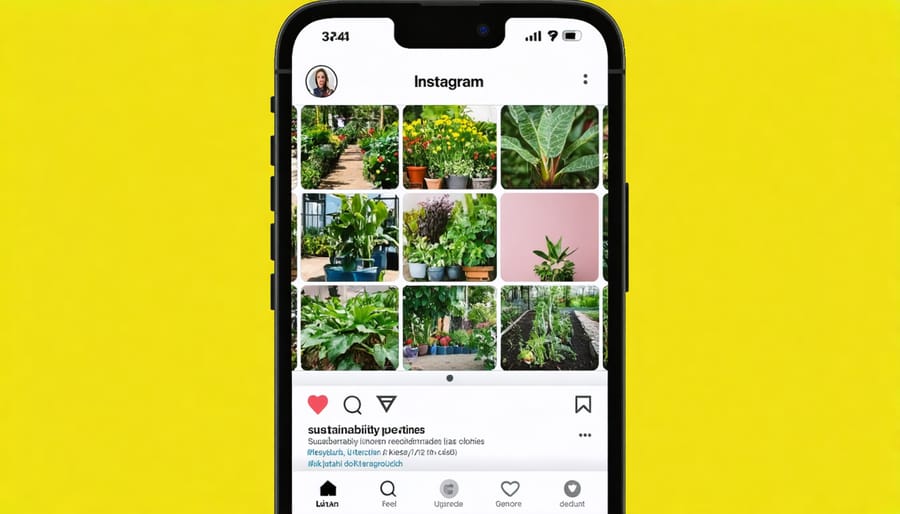
Popular Gardening Hashtags That Drive Change
Hashtags have become powerful tools for building thriving garden communities and driving environmental change. Popular tags like #GardenersForClimate and #PlantWithPurpose have united gardeners worldwide in sharing sustainable practices and eco-friendly tips.
#GrowYourOwn has inspired countless individuals to start vegetable gardens, reducing their carbon footprint through local food production. Similarly, #SaveTheBees and #PollinatorGarden have raised awareness about declining insect populations, encouraging gardeners to plant bee-friendly flowers and avoid harmful pesticides.
The #NoMowMay movement has gained significant traction, promoting biodiversity by letting lawn areas grow wild during spring. #PlasticFreeGardening continues to showcase innovative alternatives to single-use plastics in garden care, while #CompostCommunity celebrates the collective effort to reduce waste through composting.
These hashtags don’t just connect gardeners; they create measurable environmental impact. When gardeners share their success stories and sustainable techniques using these tags, they inspire others to adopt earth-friendly practices, creating a rippling effect of positive change in our communities.
Platform-Specific Success Stories
Instagram’s #GrowYourOwn movement has blossomed into a vibrant community, with millions of posts showcasing home gardens and sustainable practices. The platform’s visual nature makes it perfect for before-and-after garden transformations and step-by-step growing guides. One standout success was the “Pollinator Garden Challenge,” which inspired over 100,000 gardeners to create bee-friendly spaces.
On YouTube, channels like “Garden Answer” and “Epic Gardening” have built massive followings by sharing accessible gardening advice and environmental tips. Their seed-saving tutorials and composting guides regularly attract millions of views, turning complex sustainability concepts into achievable actions.
Facebook groups have become powerful hubs for local community gardens and seed-swapping initiatives. The “Zero Waste Gardening” group, for instance, grew from 1,000 to 50,000 members in just one year, with members sharing creative ways to reduce plastic use in gardening.
Pinterest has excelled at spreading garden planning ideas, with “Sustainable Garden Design” boards becoming some of the platform’s fastest-growing categories in recent years. These visual guides help gardeners create eco-friendly spaces while building lasting online communities.
From Pixels to Plants
Virtual Garden Tours and Live Sessions
Virtual garden tours and live streaming sessions have revolutionized how we share and learn about gardening in the digital age. Whether you’re watching a master gardener demonstrate proper pruning techniques or joining a live Q&A about composting, these interactive experiences bring expert knowledge directly to your device.
Platforms like Instagram Live and YouTube have become virtual classrooms where gardeners of all levels can participate in real-time demonstrations. Many botanical gardens now offer behind-the-scenes tours, allowing viewers to explore rare plant collections and specialized growing techniques from anywhere in the world. The key to success lies in creating engaging garden videos that combine educational value with visual appeal.
These virtual events have proven particularly valuable during challenging times when in-person visits weren’t possible, helping maintain and grow gardening communities worldwide. Seasonal tours showing gardens through different growth stages help viewers understand plant development and timing, while interactive sessions allow participants to ask questions and receive immediate feedback from experts.
The impact extends beyond education – these virtual experiences have inspired countless viewers to start their own gardens, adopt sustainable practices, and connect with fellow gardening enthusiasts across the globe. Many gardeners now document their own growing journeys, creating a ripple effect of knowledge-sharing and community building that continues to flourish online.
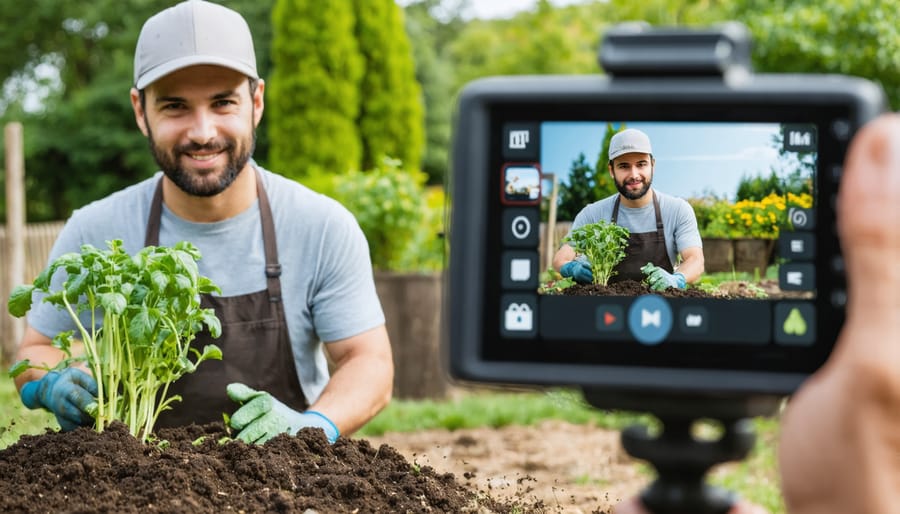
Community Challenge Campaigns
Community gardening challenges on social media have become powerful catalysts for environmental change, creating waves of positive impact across neighborhoods and continents alike. The #GrowYourOwn challenge, which gained momentum during 2020, inspired millions of people to start their first vegetable gardens, reducing food miles and promoting sustainable living practices.
One particularly successful campaign was the #PlantATreeChallenge, where participants planted trees and nominated friends to do the same. This viral movement resulted in over 20 million trees being planted worldwide, demonstrating how social media can transform individual actions into collective environmental impact.
The #PollinatorGarden challenge encouraged gardeners to create wildlife-friendly spaces, leading to a noticeable increase in urban butterfly and bee populations in participating communities. Participants shared their progress through photo series, inspiring others to transform their gardens into havens for beneficial insects.
Recent trends include the #CompostChallenge, where gardeners document their journey from kitchen scraps to black gold, and the #WaterWiseWednesday movement, showcasing creative water conservation methods in gardens. These campaigns not only educate participants about sustainable practices but also create lasting behavioral changes.
What makes these challenges particularly effective is their combination of achievable goals, visual appeal, and community support. When gardeners see their peers succeeding, it creates a ripple effect of environmental stewardship that extends far beyond social media platforms into real-world impact.
Environmental Impact Through Social Sharing
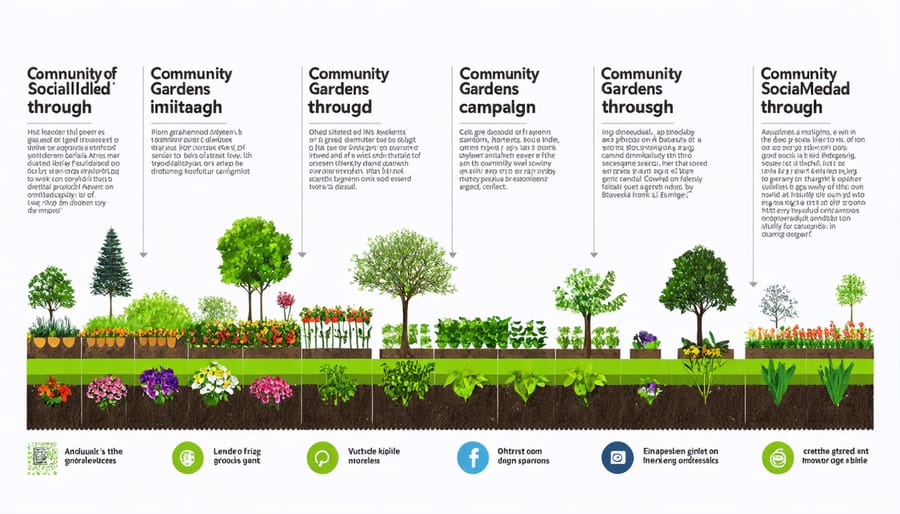
Success Metrics and Environmental Benefits
Recent data from environmental social media campaigns shows impressive results in promoting sustainable gardening practices. The #GardenForWildlife campaign, for instance, reached over 2 million users in 2022 and inspired the creation of 50,000 new wildlife-friendly gardens worldwide. Similarly, the #PlantATreeChallenge generated enough participation to result in the planting of more than 100,000 trees across multiple countries.
These campaigns have demonstrated measurable environmental benefits. Studies indicate that social media-driven gardening initiatives have contributed to a 15% increase in urban biodiversity in participating neighborhoods. The rise in home composting, prompted by viral composting tutorials, has helped divert an estimated 10,000 tons of organic waste from landfills annually.
Community engagement metrics are equally encouraging. Environmental gardening hashtags have seen a 200% growth in usage since 2020, while garden-focused environmental groups on social platforms have expanded their membership by an average of 45% year-over-year. The ripple effect extends beyond social media, with 68% of campaign participants reporting they’ve influenced friends and family to adopt more sustainable gardening practices.
These numbers demonstrate how social media campaigns effectively transform online engagement into real-world environmental action, creating lasting positive impact in our communities and ecosystems.
Local to Global Movement
Social media has revolutionized how local environmental initiatives can grow into powerful global movements. What starts as a single gardener sharing their composting success or plastic-free gardening tips can quickly inspire thousands worldwide. Take the “Grow Your Own” movement, which began with neighborhood garden sharing programs but exploded across social platforms during recent years, connecting urban gardeners from Seattle to Singapore.
These grassroots campaigns often gain momentum through relatable, authentic content that resonates with everyday gardeners. When someone shares their journey of transforming a small balcony into a thriving pollinator garden, others are inspired to do the same. The ripple effect is powerful – one successful container garden in London can motivate apartment dwellers in Tokyo to start their own.
Hashtags play a crucial role in connecting these local efforts globally. Tags like #NoMowMay and #SaveTheBees have united gardeners worldwide in collective environmental action. Many successful campaigns start with simple, achievable goals that anyone can participate in, such as planting native species or reducing water usage.
The key to scaling local initiatives is creating shareable content that’s both educational and inspiring, while maintaining a strong community focus. When gardeners see their peers making positive environmental impacts, it creates a domino effect of sustainable action.
Creating Your Own Green Campaign
Campaign Planning and Strategy
Creating an effective environmental social media campaign starts with careful planning and a well-thought-out strategy. Begin by defining clear, measurable goals for your gardening-focused campaign, whether it’s raising awareness about native plant species or promoting sustainable gardening practices. Understanding your target audience is crucial – are you reaching out to fellow gardeners, local community members, or environmental enthusiasts?
When developing your social media campaign strategies, create a content calendar that aligns with seasonal gardening activities and environmental events. For instance, plan content around Earth Day, World Environment Day, or local gardening festivals.
Choose your platforms wisely – Instagram and Pinterest work well for visual content like garden transformations, while Twitter is excellent for quick tips and environmental facts. Facebook groups can help build community engagement around your cause.
Develop a consistent message that resonates with your audience. Use relatable language and share authentic stories about your gardening journey and environmental impact. Consider creating a unique hashtag that captures your campaign’s essence and encourages community participation.
Remember to include clear calls to action in your posts, whether it’s inviting followers to share their own garden photos, join a community clean-up event, or pledge to adopt eco-friendly gardening practices. Monitor your campaign’s progress using platform analytics and adjust your strategy based on what resonates most with your audience.
Content Creation Tips
Creating engaging environmental content for social media requires a thoughtful blend of authenticity and strategy. Start by showcasing your genuine passion for sustainable gardening through high-quality photos and videos of your eco-friendly practices. To make your garden content viral, focus on capturing those satisfying before-and-after transformations of sustainable garden projects.
Use storytelling to connect with your audience – share the journey of your composting success, document the growth of native plants, or demonstrate water conservation techniques in action. Remember to keep your content relatable and achievable, showing both the challenges and triumphs of environmental gardening.
Incorporate educational elements by creating quick-tip carousels or short-form videos explaining sustainable practices. Use clear, concise captions that explain the environmental impact of each gardening technique you showcase. Include relevant hashtags that connect with both gardening and environmental communities.
Engage your audience by asking questions and encouraging them to share their own eco-friendly gardening experiences. Create polls about sustainable practices or host live sessions where followers can ask questions about environmental gardening methods. Remember to respond to comments and build a community around your shared environmental values.
Timing matters – post content when your audience is most active, and maintain a consistent posting schedule. Share seasonal content that aligns with current gardening activities and environmental awareness days or events.
Social media has revolutionized the way we share, learn, and connect about environmental gardening practices. Through these digital platforms, gardeners worldwide have created a vibrant community dedicated to sustainable growing methods and environmental stewardship. The impact of these campaigns extends far beyond likes and shares – they’re inspiring real change in backyards, community gardens, and public spaces across the globe.
By participating in environmental gardening campaigns on social media, you become part of a larger movement working towards a greener future. Whether you’re sharing your own sustainable gardening journey, learning from others’ experiences, or simply spreading awareness about eco-friendly practices, every interaction counts.
Ready to make a difference? Start by following environmental gardening hashtags, joining online gardening communities, and sharing your own green initiatives. Document your sustainable gardening practices, celebrate your successes, and don’t be afraid to share the challenges you face. Remember, even small actions, when amplified through social media, can create lasting positive change for our environment.
Together, we can cultivate not just healthier gardens, but a more sustainable world for future generations.

